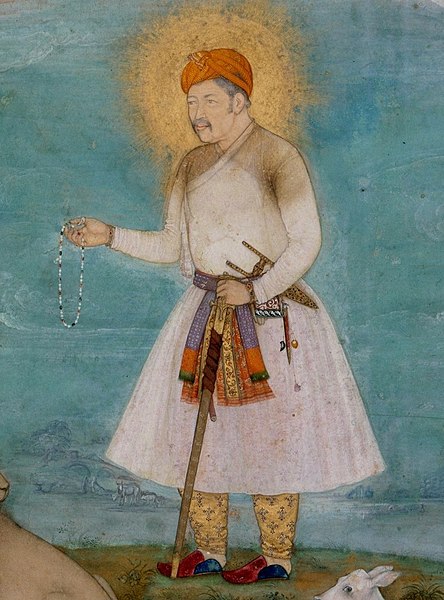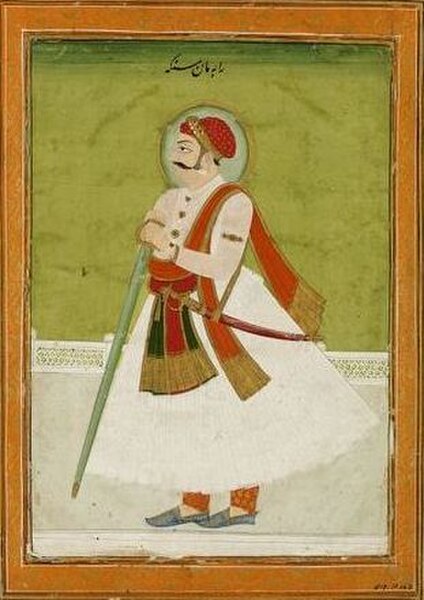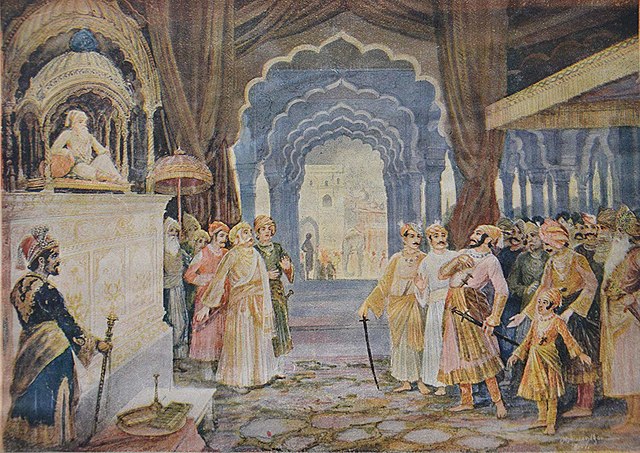Sawai Ram Singh II was the Maharaja of Jaipur from 1835 until 1880, succeeding after the death of Jai Singh III. He became the ruler of Jaipur at the age of 16 months after his father's death. During his reign, he implemented various reforms, influenced by Western ideals and British preferences. He established new departments, reorganized the police force, and constructed roads to promote economic progress. Additionally, he aimed to transform Jaipur into a modern city, introducing schools, colleges, gas lights, and piped water supply. Ram Singh also focused on women's education, building schools and hospitals for their empowerment. Ram Singh was also an avid photographer. His reign marked a period of significant transformation and progress in Jaipur.
Ram Singh II
Coinage of Jaipur under Ram Singh. In the name of Victoria, Queen of Great Britain and Empress of India. Sawai Jaipur mint.
Self-portrait as a Shaivite, c. 1870
Self portrait with dogs, c. 1870
The Kingdom of Amber, also known as Kingdom of Dhundhar, and Jaipur State, was located in the north-eastern historic Dhundhar region of Rajputana and was ruled by the Kachwaha Rajput clan. It was established by Dulha Rai, possibly the last ruler of the Kachchhapaghata dynasty of Gwalior who migrated to Dausa and started his kingdom there with the support of Chahamanas of Shakambhari in the 12th century. Mostly through 12th to 15th century, the kingdom faced stagnation, sources were scarce. Under its ruler, Raja Chandrasen Amer became a Sisodia vassal and fought in the Battle of Khanwa under Raja Prithviraj Kachhwaha.
Akbar, a long-time ally of the Kachhwahas of Amber
Raja Man Singh (1550–1614) was a trusted general of the Mughal emperor Akbar, who included him among the Navaratnas, or the nine gems of the royal court of Akbar.
Jai Singh fell out of Aurangzeb's favor when captivated Shivaji escaped from Agra.
Jai Singh II (1688–1743) founded the fortified city of Jaipur and made it his capital.








